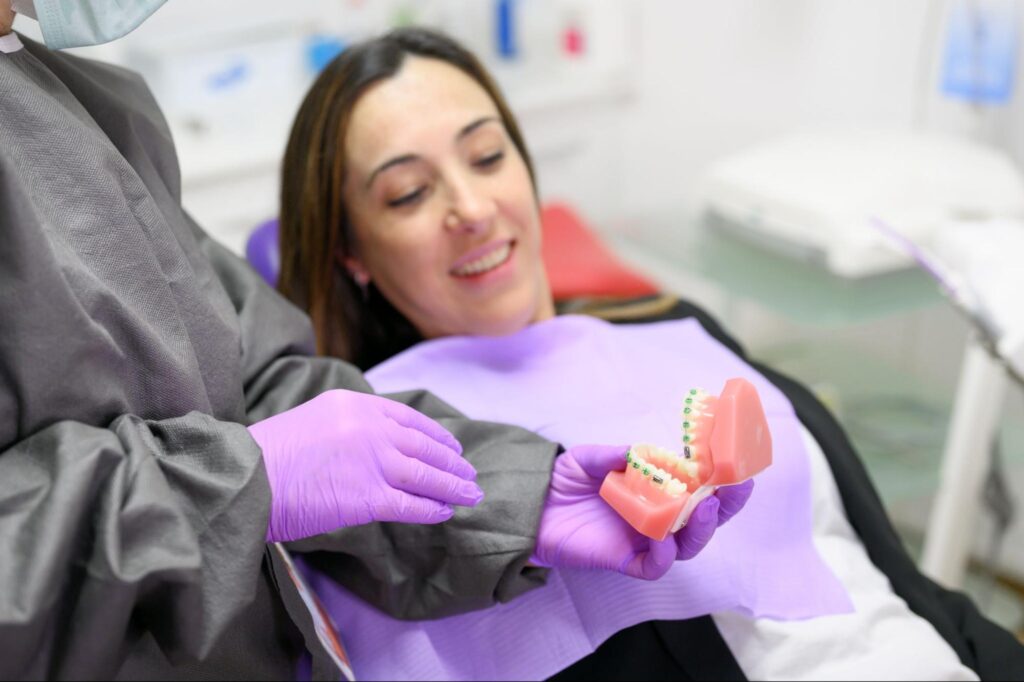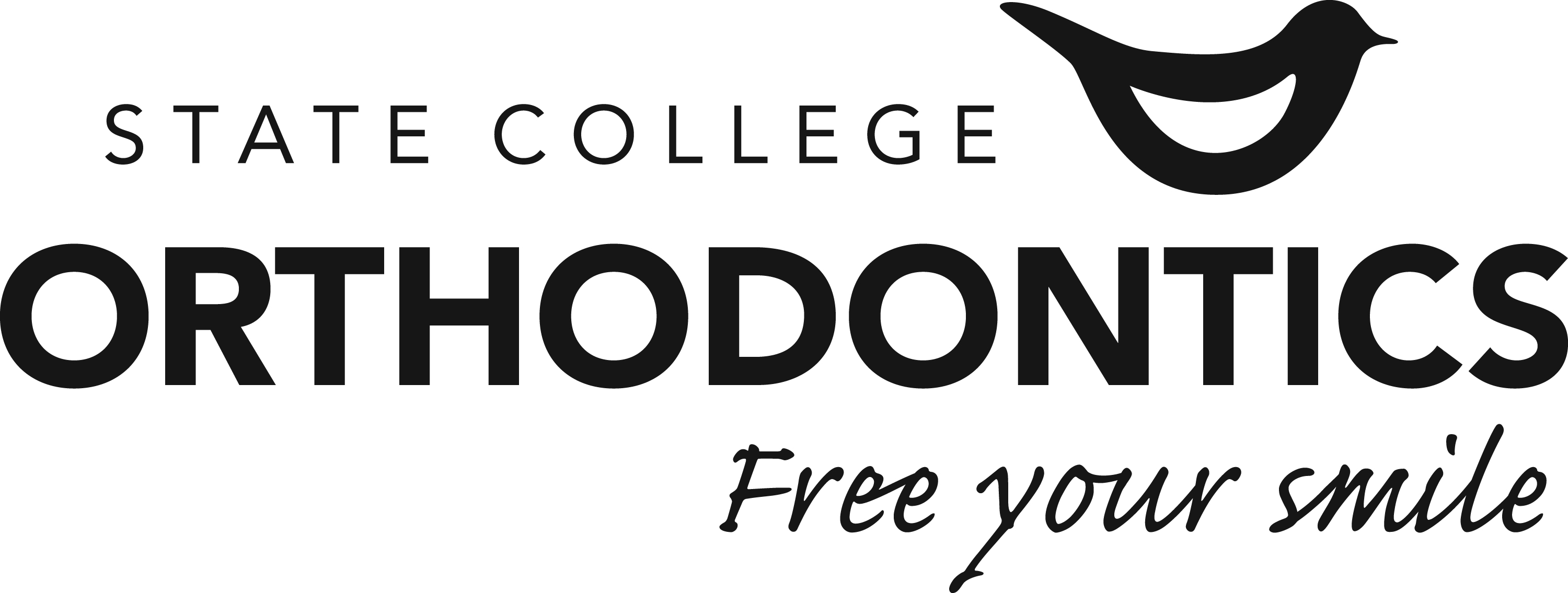Walking into an orthodontic consultation without questions in mind is like showing up to a Penn State tailgate without snacks!—you’re missing out on half the experience. Dr. Ray and the team at State College Orthodontics want every patient to feel informed and comfortable, and that starts with asking the right things. Before you take a seat in the exam chair, here are five smart questions to bring along.
What Are My Treatment Options?
Braces have evolved, offering more choices than ever before. The right option depends on factors like lifestyle, treatment goals, and daily routine. Dr. Ray will walk you through each one, but here’s a quick breakdown:
Metal Braces
- 3M™ metal braces are a time-tested option known for durability and precision.
- Great for all ages and can treat a wide range of orthodontic concerns.
Clear Ceramic Braces
- Clear ceramic braces are designed to blend in with your teeth for a more subtle appearance.
- Offer the same effectiveness as metal braces with a less noticeable look.
Invisalign Aligners
- Invisalign aligners are a nearly invisible way to straighten teeth without brackets or wires.
- Removable for eating, brushing, and special occasions.
If you’re balancing classes at Penn State, working in downtown State College, or spending weekends at Tussey Mountain, flexibility might be a priority. Now that you know your options, you should also understand how long treatment will take, which we’ll discuss next.
How Long Will My Treatment Take?
Everyone’s orthodontic timeline is different, but knowing what to expect can help you plan ahead. Treatment length at State College Orthodontics depends on factors like the complexity of tooth movement, age, and how well you stick to your orthodontist’s instructions. While there’s no instant fix, here’s a general idea of how long different treatments take:
Estimated Treatment Times
- Metal or Ceramic Braces: Typically 12 to 36 months, depending on the case.
- Invisalign Aligners: Often 6 to 24 months, but varies based on consistency in wearing trays.
- Early Orthodontic Treatment (Phase 1): Usually 6 to 18 months for younger patients needing early intervention.
Dr. Ray will provide a more precise estimate based on your needs, whether you’re hoping to finish treatment before graduation or want a steady, gradual approach. Next, let’s talk about what happens during treatment.

What Should I Expect During Treatment?
Starting orthodontic treatment means a few changes to your daily routine, but nothing you can’t handle. Regardless of your treatment type, small adjustments will help keep your teeth healthy and everything on track. Here’s what you can expect along the way:
Braces Adjustments & Care
- Regular check-ups every 4 to 8 weeks to tighten wires and monitor progress.
- Some soreness after adjustments, which usually fades within a day or two.
- Avoiding hard, sticky, or chewy foods to prevent damage to brackets and wires.
- A little extra time brushing and flossing to keep teeth clean around brackets.
Invisalign Wear & Maintenance
- Trays should be worn 22 hours a day, only removed for eating and cleaning.
- New aligners every 1 to 2 weeks to gradually shift teeth into place.
- Brushing after meals before putting trays back in to avoid staining.
- Keeping aligners in their case when not in use—losing them in a napkin at Café 210 West isn’t ideal!
Regardless of the treatment you choose, regular visits to State College Orthodontics will keep everything moving in the right direction. Now that you know what treatment looks like day to day, let’s talk about what happens if something unexpected comes up.
What Happens if Something Goes Wrong?
Life happens, and orthodontic treatment isn’t immune to the occasional hiccup. A broken bracket, a lost aligner, or a poking wire can throw a wrench in your day, but knowing what to do can keep things running smoothly. Here’s how to handle common orthodontic issues:
Braces Troubleshooting
- Loose or Broken Bracket: If it’s still attached to the wire, leave it alone and cover it with orthodontic wax. If it comes off completely, keep it in a safe place and call the office.
- Poking Wire: Try using a pencil eraser to gently push it down or cover it with wax. If it’s too bothersome, give State College Orthodontics a call.
- Soreness or Irritation: Warm salt water rinses and over-the-counter pain relievers help ease the adjustment period.
Invisalign Issues
- Lost Aligner: If you misplace a tray, wear the previous one and contact the office for the next steps.
- Cracked or Damaged Tray: Minor cracks may not be an issue, but a completely broken aligner needs replacing—avoid DIY fixes.
- Not Fitting Properly: This can happen if trays aren’t worn consistently. If one feels too tight or loose, check in with Dr. Ray.
Most minor issues can be managed at home, but if something feels off, don’t hesitate to reach out. Now that we’ve covered treatment details let’s talk about financial options.
How Much Will Treatment Cost?
During your initial visit, Dr. Ray will provide a detailed fee estimate covering all orthodontic services at State College Orthodontics. Here’s a closer look:
Payment Options at State College Orthodontics
Flexible payment options are available to fit different budgets. Patients can receive a discount for paying in full or choose interest-free in-house financing with manageable monthly payments. Secure autodraft services can be set up for added convenience, and the office accepts Visa, MasterCard, Discover, and American Express.
Insurance & Coverage
Many insurance plans cover a portion of orthodontic treatment, though coverage varies. The team can assist in determining benefits, but insurance estimates are not guaranteed, and any remaining balance is the patient’s responsibility.
Dr. Ray and the team work closely with families to create a financial plan that makes orthodontic care affordable and stress-free!

The First Step to a More Confident You
Why wait to get started when your future smile is just a consultation away? Dr. Ray and the team at State College Orthodontics in State College, PA, are ready to help you find the best path forward—no confusing jargon, no surprises, just expert care with a personal touch. Let’s turn that “what if” into a “wow”—book your free in-person or virtual consultation today!
 814-308-9504
Free Consult
814-308-9504
Free Consult



